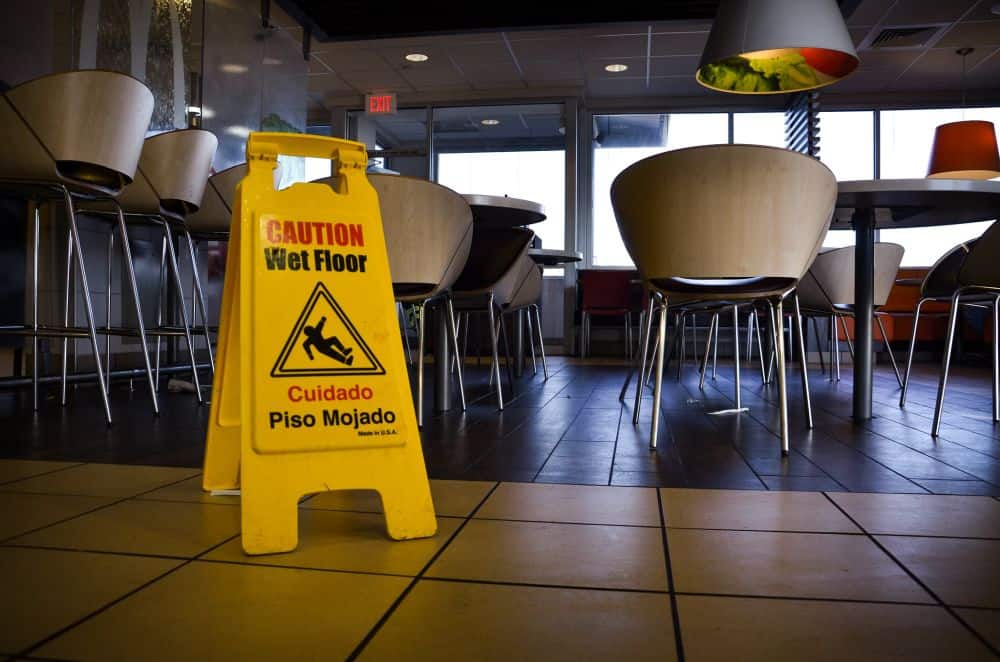
[Image above] According to the U.S. Consumer Product Safety Commission, floors and flooring materials contribute directly to more than 2 million fall injuries each year. A unified standard for classifying flooring materials based on their slip resistance could help lower the frequency of such accidents. Credit: r. nial bradshaw, Flickr (CC BY 2.0)
Snow may be a wonderland to play in, but it becomes a headache when tracked inside as dirty, wet footprints all over the floor.
Constantly mopping up melted snow can be annoying, but there are important safety as well as cleanliness reasons for doing so. Slip and fall accidents account for more than 1 million hospital emergency room visits each year in the U.S. Many of those accidents take place in the winter when melted snow and ice make floors more slippery.
To reduce slip risk on wet surfaces, governments around the world have established requirements or recommendations for flooring materials, including where and how each one should be installed and used.
However, despite efforts, “no one single method of assessing slip resistance and, hence, no unified standard for classifying floorings, based on their anti-slip properties, have yet been established,” researchers write in a recent paper.
The researchers come from the Institute of Ceramic Technology at Jaume I University in Spain. In their paper, they aimed to demonstrate the need for a unified standard by revealing the discrepancies between different tests. Specifically, they compared slip resistance values for about 200 types of ceramic floor tile surfaces measured using three methods:
- Friction pendulum. This method measures the slip resistance of a flooring material by replicating the interaction between a moving pedestrian heel and static surface. A swinging arm with a rubber slider serves as the “heel” during testing.
- Linear tribometer. Tribometers are devices to measure friction and wear under well-defined operation conditions, mostly pure sliding. This study used the BOT-3000E digital tribometer.
- Barefoot ramp. This method involves a person walking barefoot down a tiled ramp that has a stream of water running over it. The ramp is inclined to the point where the person slips, and then the angle of the ramp is measured.
Comparison of the results showed that most flooring types could be deemed either suitable or unsuitable depending on the measurement method used and limits specified by different governments (e.g., Spain, U.S., Great Britain). In other words, the “safety” of any given flooring material was determined more by where someone lives than the material itself.
Based on these findings, the researchers proposed several ways to standardize slip resistance test methods to achieve more meaningful results.
- Modifying the required slip resistance values. Currently, Spain has much more restrictive limits on slip resistance values than the U.S. and Great Britain. Countries could agree on a single set of values, which may require compromises from all parties involved. For example, the pendulum test value specifications could be lowered in Spain and raised in the U.S.
- Modifying the test methods. Elements of each test method could be adjusted or replaced so there are fewer differences between each test. For example, using a harder rubber slider in the friction pendulum test may mimic a real pedestrian heel more closely.
The paper, published in cfi – ceramic forum international, is “Slip resistance of ceramic floorings: Comparison between different standard measurement methods” (December 2023, Vol. 100, No. 5, pp. E43–E49).
